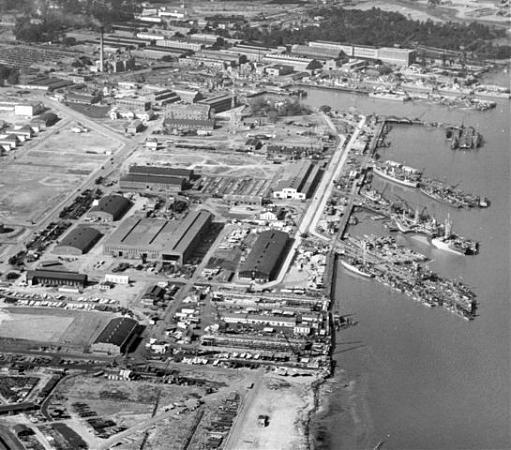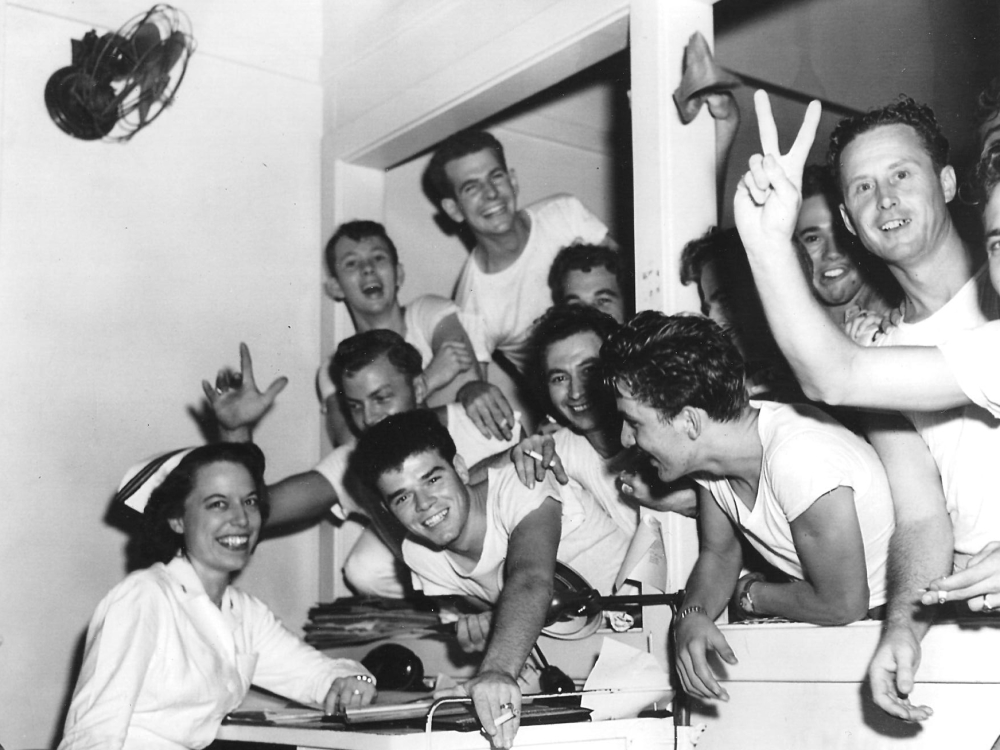




CHARLESTON NAVAL SHIPYARD
The closing of Charleston’s Naval Base and Shipyard in 1996 marked the end of an era after nearly a century as South Carolina’s largest civilian employer. Many feared the region might never recover from its more than $1 billion annual impact.
U.S. Sen. Benjamin Tillman successfully lobbied in 1901 for the U.S. Navy to purchase a 400-acre site known as Chicora Park along the west bank of the Cooper River, a few miles north of Charleston. Previously the site of two plantations, the park had become an upscale neighborhood.
The Charleston Naval Yard, as it was first known, had the largest dry dock on the East Coast prior to World War I. It served as a decommissioning and storage site for Navy vessels and as a building and repair shop for guided missile ships, submarines, destroyers, cruisers, and submarine tenders. Local leaders hoped the new base would invigorate Charleston’s sagging economy after the trauma of the Civil War, Reconstruction, the Earthquake of 1886, and a string of devastating hurricanes.
At the outbreak of WWI, the shipyard employed 1,708 workers and trained more than 5,000 sailors before expanding its operations and opening a naval hospital. By the end of The Great War, the shipyard employed 6,000 workers, including 1,000 women at the Navy’s only clothing factory.
The shipyard narrowly escaped being decommissioned in 1922, thanks to U.S. Sen. Ellison Smith, a threat it faced again after the stock market crash of 1929. Employment dropped below 500 by 1924, then below 250 by 1932.
While the Great Depression brought financial despair to communities across America, the shipyard helped Charlestonians fare better than most. WWI disarmament treaties mandated that the United States maintain a minimum number of warships, and Charleston was selected as the place to build them, including 20 destroyers and 140 LSMs, an amphibious assault ship. Meanwhile base staff continued to repair and refit the many ships that came into its great dry docks.
In 1941, Naval Weapons Station Charleston was commissioned to load 30 million tons of conventional ordnance onto vessels docked at the shipyard. Employment skyrocketed to 26,000. With so many employees came a crucial need for additional infrastructure, including housing, transportation and schools, the end result of which was the eventual creation of the city of North Charleston.
After WWII, the shipyard’s employment fell to 10,000, though many of its retired employees and servicemen stayed to live and work in Charleston. Things picked up again with the outbreak of the Korean War in 1950 and the shipyard began refitting the Navy’s nuclear submarine fleet, activating 44 ships and converting another 27 for active duty.
Throughout the 1960s, Congressman L. Mendel Rivers, chairman of the House Armed Services Committee, used his political clout to strengthen and expand the shipyard. It continued to build and refit nuclear and ballistic missile submarines, adding a fifth dry dock to accommodate Polaris and Poseidon missiles. It expanded again in the 1970s to build Redeye missiles. Throughout the 1980s, the renamed Charleston Naval Base and Charleston Naval Weapons Station were home ports to more submarines than any other base in the free world, as well as cruisers, destroyers, and submarine tenders.
The base’s usefulness declined after that, however, and it was slated for decommission in 1993. When it officially closed on April 1, 1996, Charleston lost 8,722 military and 6,272 civilian jobs.





